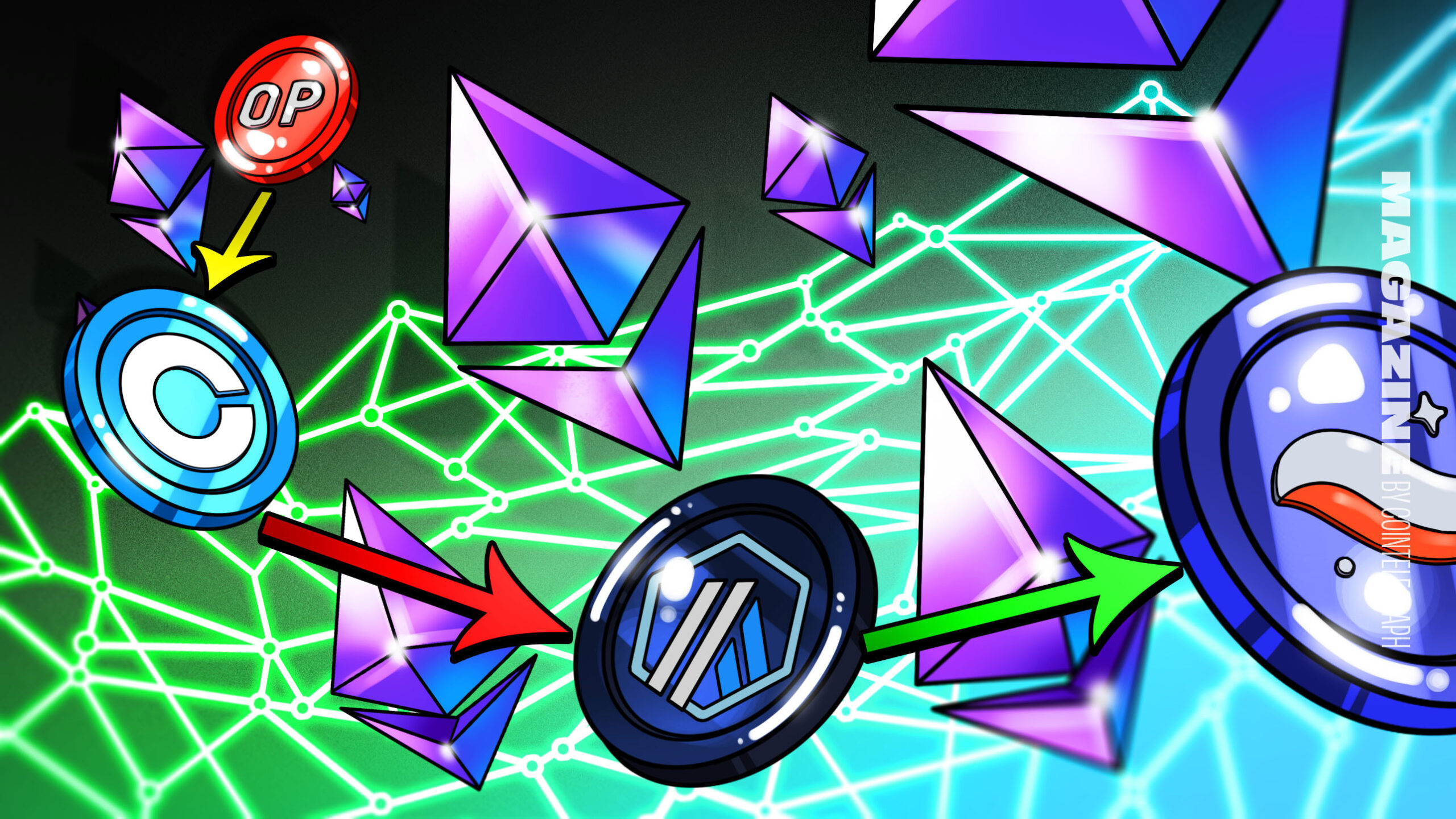Ethereum is finally on the verge of solving the interoperability
  |
Ethereum is finally on the verge of solving the interoperability problems that have plagued the ecosystem since the layer 2 roadmap started to take off a couple of years ago.
This year, users can expect to see easy crosschain swaps between L2s, new chain-specific addresses that are human-readable, trustless crosschain messaging and the launch of innovative “unified liquidity” bridges like Polygon’s Agglayer.
With the first of the upgrades going live in the next few weeks, ecosystem leaders from Base to Across predict it’s only a matter of time before Ethereum will feel like Ethereum again.
“The move toward fast, standardized interop isn’t just a technical upgrade — it’s essential for making Ethereum feel like one seamless ecosystem,” explains Across co-founder Hart Lambur.
“When chains can interact in two seconds or less, the vision of a unified Ethereum comes to life.”
Lambur revealed that the audited code for Across and Uniswap’s new intent standard (EIP-7683) will be deployed within the next week, with crosschain orders starting to flow through the decentralized solvers system “in the coming weeks.” Fifty projects and protocols are supporting the new standard, including Polygon, Arbitrum, Optimism, Base and Uniswap.
Ethereum interoperability: What’s changing in 2025
In the last bull run, Ethereum had a scaling problem. Gas fees peaked at $200 per transaction as a deluge of users competed for blockspace. Layer 2 rollups like Base, Arbitrum and Optimism emerged to fix that issue and have successfully scaled transactions by 15 to 20 times, with fees now counted in cents.
Unfortunately, it’s left Ethereum with 55 new rollups that are all effectively isolated from one another. Users have to muck around with expensive and risky bridges to move between them. The lack of cohesion and interoperability has weighed heavily on ETH sentiment and price.


Mallesh Pai, the senior director of research at Consensys, says the first piece of the interop puzzle to be solved will be enabling simple crosschain swaps between tokens on different L2s.
“I think what we’ll get in the next few months will be seamless token transfers,” he tells Magazine, noting that’s still some way away from synchronous composability — where every app and every L2 offers complete and instantaneous interoperability — but it’s still good enough for “99.9999%” of what most users need.
“Most of our users, they have their money on one chain, they want to buy something on another chain. And I believe we’ll be able to deliver that in months.”
Base lead contributor Jesse Pollack told Magazine at Devcon that two particular improvement proposals stand out for the impact he expects them to have.


“It’s getting solved fast. There’s two really important specifications that are being worked on right now. One is called ERC-7683, which kind of defines these standards for these intents, which is a form of crosschain execution,” he says.
“And then the one that we’re helping drive called RIP-7755, which basically lets you execute crosschain transactions really easily.”
RIP-7755 interoperability plan explained
Rollup Improvement Proposal-7755 uses a permissionless network of offchain relayers called Fulfillers, who earn a tip for ferrying a user’s crosschain call to the correct destination.
“It lets you execute a transaction from one L2 on another L2 in a totally trustless way. And so you can execute it over there, and then you can kind of have the balance settle back to the original place and there’s no third party,” he says. “It just relies on the existing Ethereum construction.”
Read also
Features
Risky business: Celsius crisis and the hated accredited investor laws
Features
Why Animism Gives Japanese Characters a NiFTy Head Start on the Blockchain
Emmanuel Awosika, head of research from 2077 Collective, says one of the advantages of this approach is that it “allows bridging via lock/mint of tokens across chains” which he says is superior to using liquidity pools.
Because the different L2s all have different block times, the transactions won’t be instant (known as “synchronous”), but they’ll be pretty fast. This is called “asynchronous,” and Pollack doesn’t think the brief delay will be an issue.
“If you look at the internet, it’s predominantly asynchronous today, like,…
cointelegraph.com
